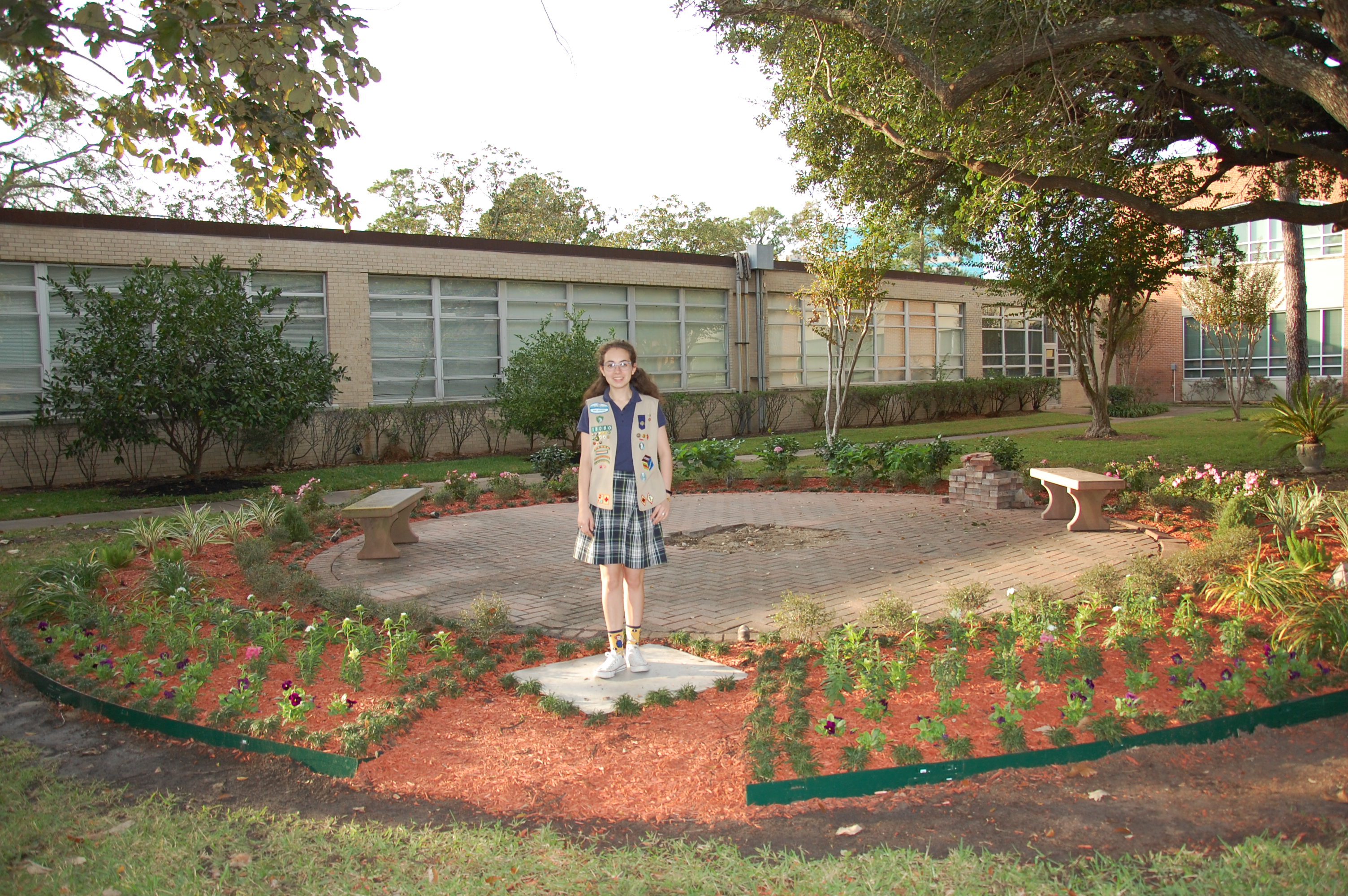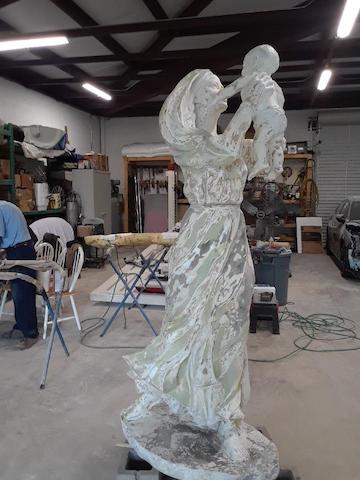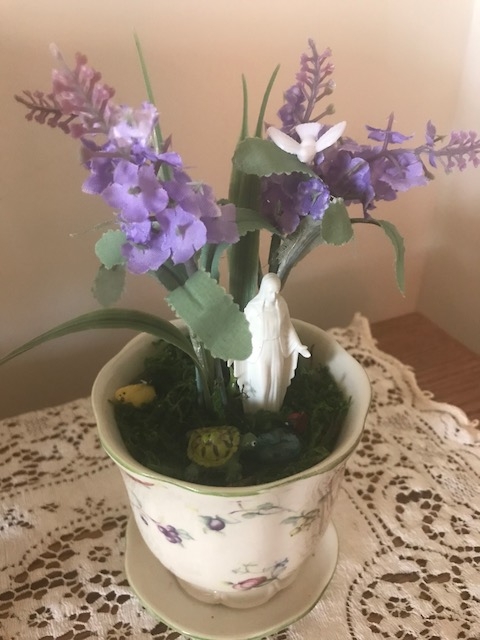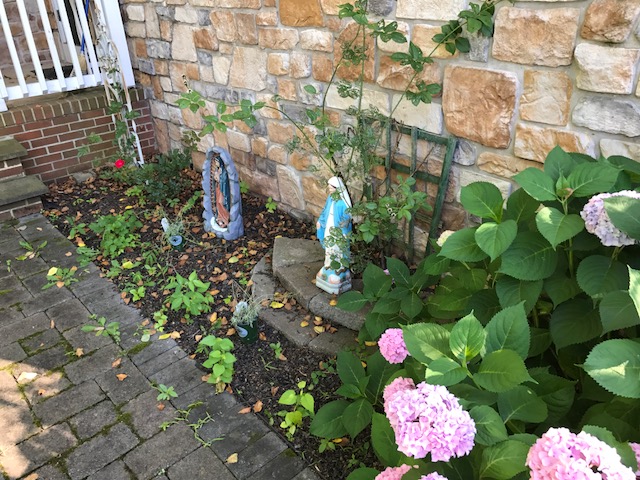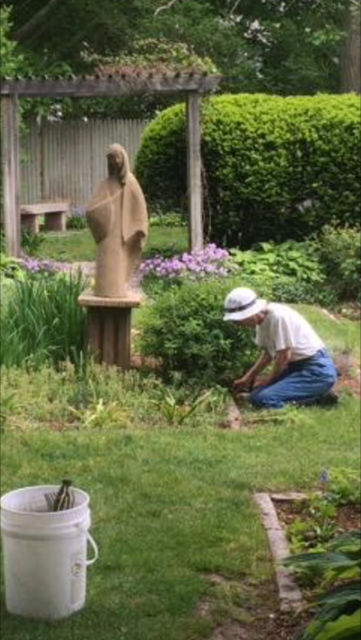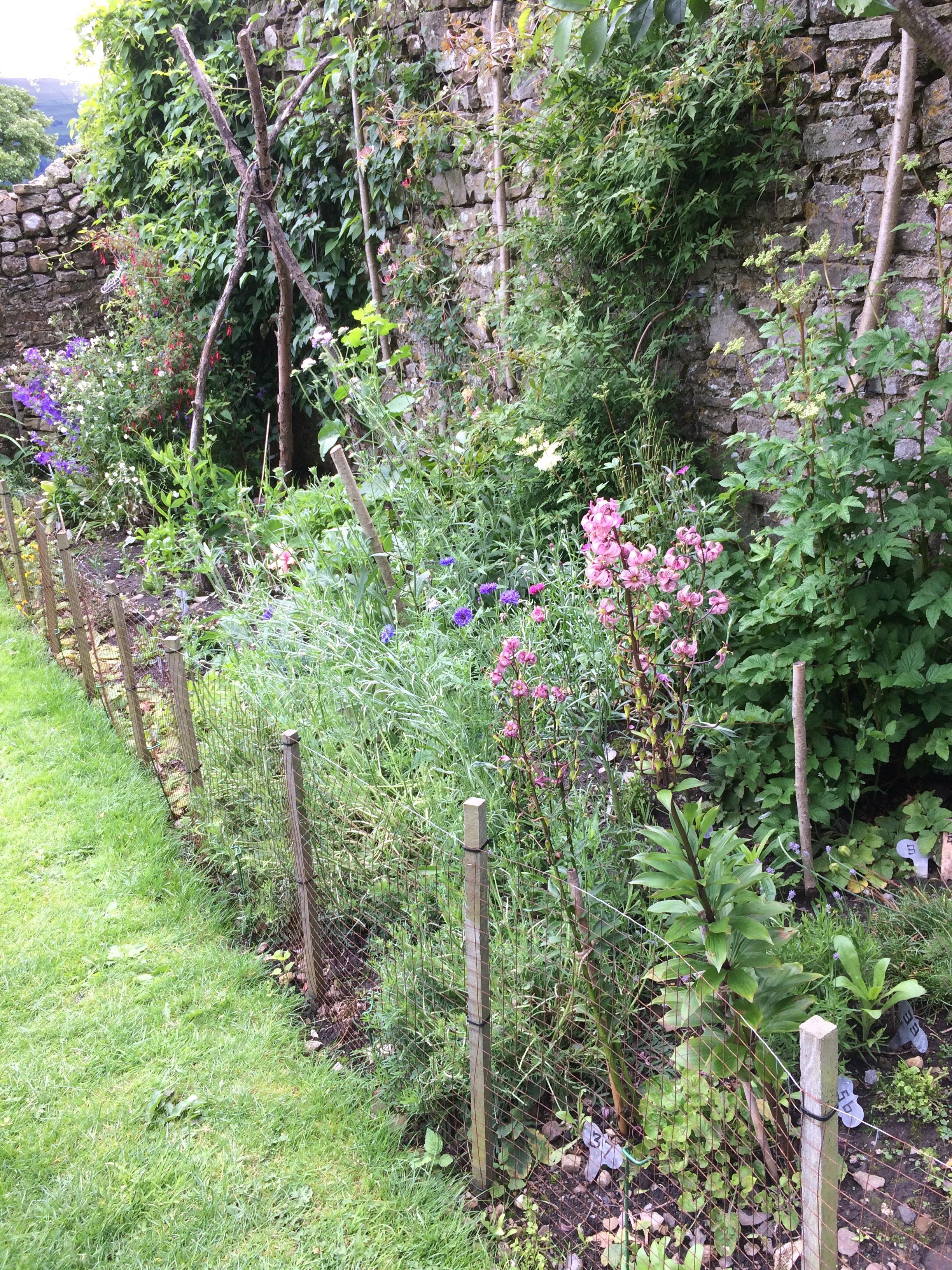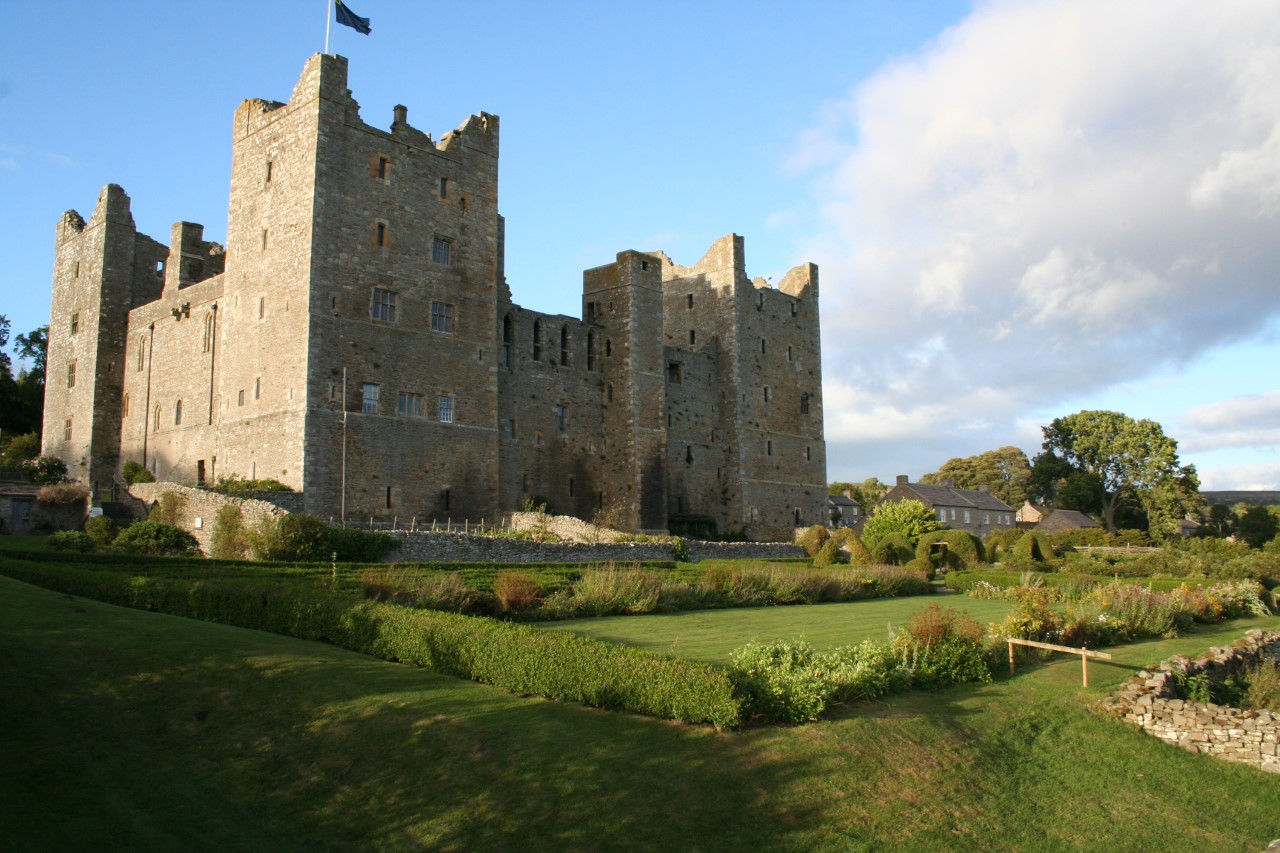Blogs
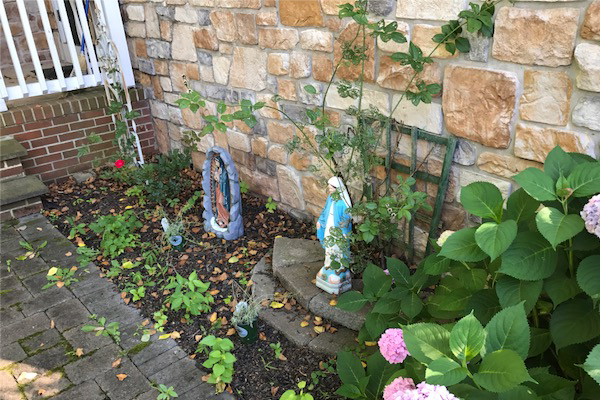
Mary's Gardens Movement Lives On
By Olivia Gillingham and Kayla Harris
The John Stokes and Mary’s Gardens Collection was a significant addition to the Marian Library’s holdings when it was donated in 2013 by the Stokes family. The collection, so large it had to be transported from Philadelphia to Dayton on a semi-truck, contains Stokes’ personal papers, audio files of his speeches (recently digitized and available online in the future), and records of his organization, Mary’s Gardens. The organization aimed to promote the creation of Mary gardens in the United States and reinstate the Marian names of flowers—a mission that aligns quite well with the Marian Library’s own of making the Blessed Virgin better known, loved and served.
This time last year we celebrated the Stokes Collection with a Mary’s Gardens exhibit that included a living garden inside Roesch Library alongside an exhibit of archival materials from the collection. Though we all miss having fresh flowers inside the Library this springtime, we in the Marian Library have enjoyed hearing and seeing how last year’s exhibit, and one of our special collections, inspired others to create their own Mary gardens, or write to us about the existing Mary gardens in their community. Based on the stories and photos we have received stemming from our questionnaire, the Mary’s Gardens movement and Stokes’ work is still flourishing!
Anna McCorkle wrote to us about creating a Mary garden at St. Cecilia Catholic Church in Houston, Texas. She states, “as a Girl Scout Gold Award project, a neglected green space was redesigned and recreated as a Mary garden and living rosary garden which uses Marian plants as beads.” Volunteers removed a statue of the Blessed Virgin Mary and Jesus so that it could be repaired and restored to its original beauty. Hurricane Harvey devastated the Houston area in August 2017 and caused some delays to the project, but as of this spring preparations were being finalized for a rededication ceremony with the repaired statue as the centerpiece.
Phyllis Schmerbeck of Kintnersville, Pennsylvania, took a cue from John Stokes’ recommendations for creating Mary dish gardens, or container gardens. Using teacups and saucers, Schmerbeck created small Mary garden favors to use for a women's tea event at her parish. She also sent photos of her own Mary garden, which are shared in the photo gallery.
Susan Witzell, the archivist at the Woods Hole Historical Museum helped us update our labels for images of John Stokes in the gardens at Woods Hole, Massachusetts. This Mary garden, which was the inspiration for Stokes’ work, is still well-maintained, and the Woods Hole historical museum recently held a talk focused on spiritual gardening. Witzell sent us a photo of the garden as it looks today with caretaker Cynthia Rose, and the iconic statue of Mary seen in the background similar to the photos of Stokes.
Several others wrote to share their plans to start a Mary garden or with specific gardening questions. We heard from Elizabeth Carter at Bolton Castle in the United Kingdom, which has a beautiful Mary garden in addition to its rose garden, vineyard and maze. Mary gardens originated in medieval England as a means of storytelling about the Blessed Virgin, so it’s exciting to see them still blooming there today.
This spring, consider turning your traditional garden into a Mary garden with tips from the Stokes Collection, and share your photos and stories with us!

